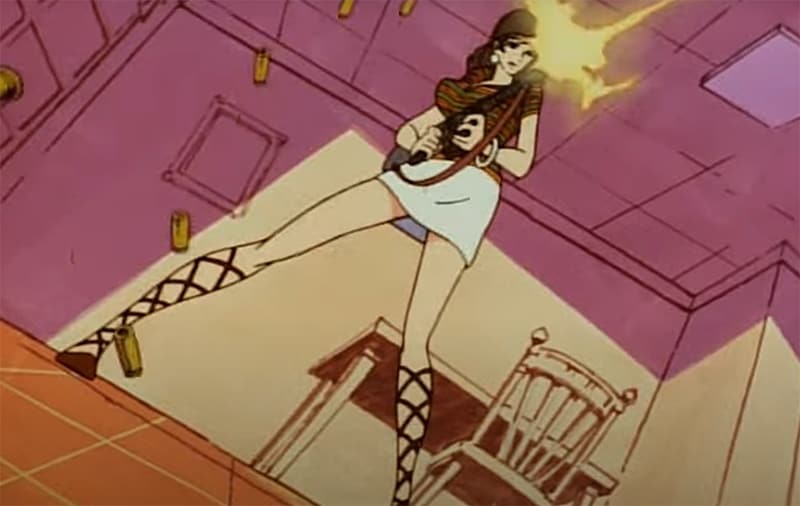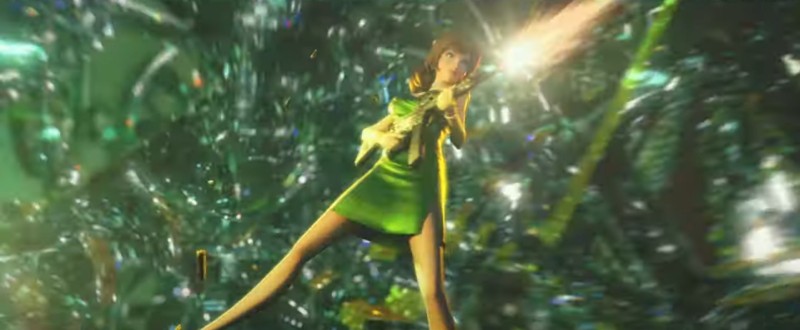Reimagining an Icon in ‘Lupin III: The First’
In 1967, manga artist Kazuhiko Katō — known better by his pen name, Monkey Punch — was tasked with making an “adult-oriented series” for publication in Weekly Manga Action, a seinen-genre (intended for older boys and young men) magazine published by Futabasha. What Katō created was Lupin III, (a.k.a. Lupin the Third) an adventure-comedy featuring the titular gentleman thief descended from Maurice LeBlanc’s famous literary character Arsène Lupin. The manga features sex and violence, often unsavory and frequently at the same time, along with dark humor and a fair bit of slapstick absurdity.
The premise is simple and lends itself to episodic stories: Arsène Lupin III is the world’s number-one thief. He is pursued by Interpol Inspector Zenigata, in what Katō described as a “human Tom and Jerry” relationship, and occasionally teams up with frenemies Jigen, Goemon, and Fujiko to pull off a caper. Lupin III was a surprise hit that outlasted Katō’s three-month contract by over a year, with the original run ending in 1969. But additional official Lupin III manga, frequently featuring members of his supporting cast, have continued to be produced as recently as 2014, nearly all of which were written by Katō himself.
Meanwhile, the character has had multiple televised anime series, beginning as far back as 1971. The first, known colloquially as Lupin the Third Part I (or “Green Jacket”), premiered to abysmal ratings, leading to the replacement of original director Masaaki Ohsumi with Hayao Miyazaki (yes, that one) and his Studio Ghibli co-founder, Isao Takahata. Miyazaki and Takahata took the series’ tone in a much more family-friendly direction than Ohsumi’s original manga-faithful adaptation. This more “happy-go-lucky” version of the character would go on to define the tone of the 1977-1980 run, known as Lupin the Third Part II (or “Red Jacket”), a.k.a. New Lupin III. This was the longest-running Lupin III TV series and took Lupin and friends on globe-trotting adventures in the vein of Indiana Jones or Mission: Impossible.
Lupin the Third Part II‘s popularity led to two theatrical films, The Mystery of Mamo in 1978 and Castle of Cagliostro in 1979. The latter was Miyazaki’s feature directorial debut, and this notoriety has propelled the film to become perhaps the most well-known piece of Lupin III media, despite the fact that it flopped in its original release. Castle of Cagliostro and Lupin the Third Part II are the defining installments of the franchise — the former being an animation darling; the latter being beloved by a generation.

The next forty years saw the release of four more televised anime series, seven more theatrical animated features, multiple live-action films, and even an obscure Italian board game. But there was still one significant step for Lupin III to take. In June 2019, the poster dropped for the feature film Lupin III: The First, revealing that the next adventure would be the franchise’s first-ever venture into 3D animation (even the video game is an arcade cabinet animated with pixel art). Katō was credited as saying, “I’ve been looking forward to a 3DCG Lupin III for a long time.”
Imagine being the first person to animate Mickey Mouse in 3D and being told that Walt Disney was looking forward to seeing his creation in 3DCG for the first time. That’s what it felt like for the Lupin III: The First animation team to hear of Katō’s excitement. Never mind the anticipation of all the fans who’ve been following fifty years’ worth of franchise history and their expectation for this movie to live up to its legacy.
“The pressure was there,” admits rigging supervisor Tatsuya Akagi in an email to FSR ahead of the film’s US home video release. “The great thing about dealing with popular characters is that there are already a lot of great examples of great work. But on the other hand, it means that we would need to create a new style that is as great as what’s already been done. The transition or ‘translation’ to 3D was about determining what the essence of Lupin was about.”
Animation supervisor Tomokazu Sakamoto adds, also via email, “We made sure we were incorporating all the existing characteristics of the IP and were conservative when making new attempts. We didn’t try to change things when it was unnecessary, but we did experiment when something that worked in 2D didn’t translate well into 3D.”
The team’s results demonstrate that their efforts paid off. Lupin III: The First is a delightful watch. The characters’ movements are exaggerated and lively and always maintain a strong sense of key posing and distinct silhouette. There are moments when the sharp movements almost look like the film was animated on twos. As Sakamoto recalls, “In the early stages of the project, we considered animating on twos, but that created some difficulties on the cloth simulation. So in the end, we chose full animation. We were shocked to see [Spider-Man: Into the Spiderverse] had solved the problems we faced when the trailer came out a few days after we made our decision.”
That is an apt comparison because, much like Spider-Man: Into the Spiderverse, Lupin III: The First has a deep respect and love for both the history of the property and the art of animation. This is evident from the very first moments of the film as the opening title sequence is structurally a beat-for-beat reimagining of the 1977 anime’s intro credits.
The narrative of the new film resembles Castle of Cagliostro in structure as Lupin and company’s pursuit of treasure leads them into a far more sinister and high-stakes plot. Legacy is a running theme of the film — the artifact that drives the story’s myth-arc is the only thing that the original Arsène Lupin was never able to steal. By successfully pulling off this caper, Lupin III ventures into a realm that the Lupins of decades past — including his grandfather and his own previous animated incarnations — could never reach.

Kazuhiko Katō passed away in 2019, before the Japanese release of Lupin III: The First. It’s absolutely tragic that he was unable to see this true culmination of his creation win so many awards and hearts. But the movie’s post-script features a quote from him from July 2017: “I’d like to keep sending Lupin out for adventures all over the world.”
Lupin III: The First fulfills the wishes of Katō on many levels, not only as a story of a globe-spanning adventure, but as a production that drew from globe-spanning talents and as a film that has garnered globe-spanning critical praise at Annecy, Sitges, and the Japanese Academy Awards. What began as a three-month manga contract has reached a truly international stage, and that’s a pretty amazing achievement. You can and should catch it for yourself.
Lupin III: The First is now available on Steelbook, Blu-Ray, DVD, and digital.





